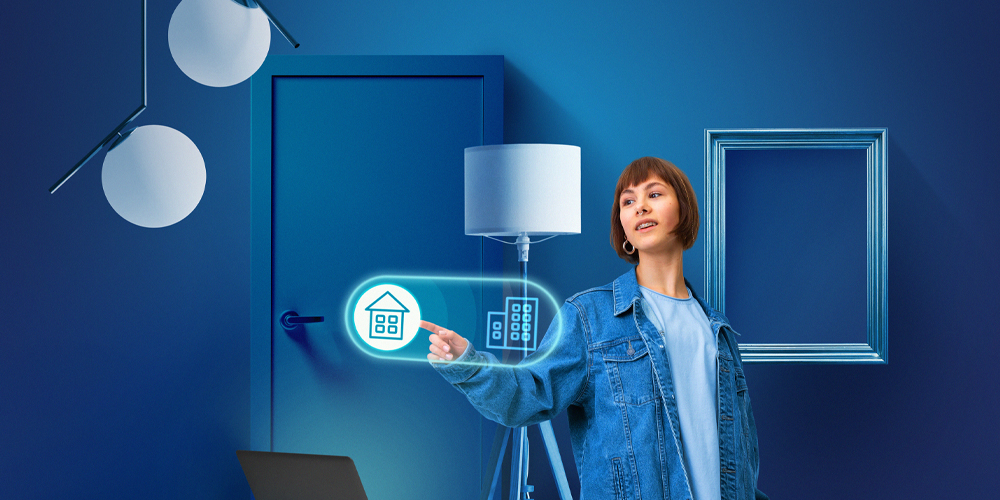Understanding Smart Home Technology
At its core, smart home technology refers to devices and systems that connect to the internet, allowing users to control various aspects of their home remotely. This transformative technology has been designed to enhance convenience, security, and energy efficiency in our daily lives. Homeowners can manage lighting, security systems, heating, and even appliances directly from their smartphones or other connected devices.
One of the primary objectives of smart home technology is to create a more integrated and user-friendly living environment. This means that everyday tasks, which may have once required manual effort, can now be automated or controlled from anywhere. For instance, you can set your lights to turn on automatically when you arrive home, or you can adjust the thermostat settings from your office before you head back for the day.
Smart home devices are designed to be intuitive and easy to use. Many systems utilize mobile apps that provide a user-friendly interface. Through these apps, homeowners can easily monitor their homes and make adjustments as needed. This accessibility is particularly beneficial for individuals with mobility challenges, as they can control their home environment without physical exertion.
Moreover, smart home technology often promotes energy efficiency. For example, smart thermostats learn your heating and cooling preferences, optimizing energy use throughout the day. When combined with smart lighting solutions, homeowners can reduce energy consumption significantly. These advancements not only lead to lower utility bills but also contribute to a more sustainable lifestyle.
Integration is a key aspect of smart home technology. Different devices can communicate and work together seamlessly, creating a cohesive smart home ecosystem. For instance, a smart security system can interact with your smart lighting. If the security system detects motion, it can automatically turn on outdoor lights, providing an added layer of security.

The Role of the Internet of Things (IoT)
The rise of the Internet of Things (IoT) has been a game changer for smart homes. IoT refers to the network of interconnected devices that communicate with each other and exchange data. This connectivity allows for seamless integration of different smart home components, enhancing the overall user experience.
With IoT, devices can collect data and use it to improve their functionality. For example, a smart thermostat equipped with IoT capabilities can analyze your daily routines. By understanding when you typically leave for work or return home, it can adjust the temperature accordingly, ensuring comfort while optimizing energy use. This proactive adjustment not only enhances your comfort but also saves energy, reflecting a growing trend toward sustainability in home automation.
Another example of IoT’s impact is in smart security systems. These systems can be connected to various sensors and cameras throughout your home. If a security camera detects movement, it can send an alert to your smartphone. Additionally, if you have smart locks installed, you can unlock your door remotely for a trusted visitor. This level of connectivity and communication ensures that you have full control over your home security at all times.
IoT also facilitates remote monitoring and control of home devices. Many smart home devices come with accompanying mobile apps that allow users to access their systems from anywhere in the world. Whether you want to check if you left the lights on or adjust your home’s heating while on vacation, IoT makes it possible. This capability not only provides peace of mind but also ensures you can manage your home efficiently.
Furthermore, the integration of AI with IoT in smart homes is paving the way for even more sophisticated solutions. For instance, AI algorithms can analyze data collected by various IoT devices to provide insights into energy usage patterns. This information can help homeowners make informed decisions about optimizing their energy consumption, leading to greater savings and a reduced carbon footprint.
As IoT technology continues to evolve, we can expect further advancements in smart home automation. The growing interconnectedness of devices will lead to increasingly seamless and intelligent systems. Homeowners will benefit from enhanced convenience, improved security, and greater energy efficiency. In a world where technology is increasingly prevalent, embracing smart home innovations powered by IoT is not just a trend but a significant shift towards smarter living.
Key Innovations in Smart Home Automation
Several innovations are driving the adoption of smart home technology. Here are some of the most significant advancements:
1. Smart Lighting Systems
Smart lighting allows users to control their home’s lighting remotely. With smart bulbs, you can adjust brightness, color, and schedules via an app. This not only enhances convenience but also contributes to energy savings. For instance, you can set lights to turn off automatically when you leave home, reducing electricity usage.
2. Home Security Solutions
Security is a top priority for homeowners. Smart home technology offers a range of security solutions, including smart locks, cameras, and alarms. These devices enable homeowners to monitor their property in real time. You can receive alerts on your phone if unusual activity is detected, allowing for quick responses to potential threats.
3. Smart Thermostats
Smart thermostats learn your heating and cooling preferences over time. They can adjust settings automatically based on your habits, ensuring optimal comfort while saving energy. By using data from your daily routine, these devices help reduce utility bills and environmental impact.
4. Voice-Activated Assistants
Voice-activated assistants like Amazon Alexa and Google Assistant have revolutionized home automation. These devices allow users to control various smart home functions using voice commands. You can adjust the thermostat, turn on lights, or play music simply by speaking. This hands-free approach enhances convenience and accessibility.
The Benefits of Smart Home Technology
Adopting smart home technology offers numerous benefits. Here are some key advantages:
1. Increased Energy Efficiency
Smart homes promote energy efficiency by allowing homeowners to monitor and control energy usage. With real-time data, you can identify energy consumption patterns and make informed decisions. This not only reduces utility costs but also contributes to a more sustainable lifestyle.
2. Enhanced Security
Smart security solutions provide peace of mind for homeowners. With the ability to monitor your home remotely, you can ensure safety even when you’re away. Smart locks and cameras add an extra layer of protection, allowing you to control access to your home.
3. Improved Comfort and Convenience
Smart home technology enhances daily life by providing greater comfort and convenience. From adjusting the thermostat to dimming the lights, these innovations streamline everyday tasks. Automation can also help create personalized environments tailored to individual preferences.
Challenges and Considerations
While the benefits of smart homes are significant, there are also challenges to consider:

1. Data Privacy and Security
With increased connectivity comes the risk of data breaches and privacy concerns. Homeowners must ensure that their devices are secure and that personal data is protected. Regular software updates and strong passwords can mitigate these risks.
2. Interoperability Issues
Not all smart home devices work seamlessly together. Interoperability can be a challenge when using products from different manufacturers. Choosing devices that are compatible with established platforms, like Google Home or Amazon Alexa, can help create a cohesive smart home experience.
The Future of Smart Home Technology
The future of smart home technology looks promising. Innovations continue to emerge, making homes smarter and more efficient:
1. Artificial Intelligence Integration
As AI technology advances, it will play a significant role in smart homes. AI can analyze data from various devices to optimize energy use and enhance security. For instance, smart systems might predict your daily habits and adjust settings accordingly, creating a more intuitive living experience.
2. Increased Personalization
Future smart homes will likely offer even greater personalization options. By learning individual preferences and routines, smart systems can create tailored environments. This level of customization will enhance comfort and improve overall user experience.
3. Sustainable Innovations
As sustainability becomes a priority, smart home technology will increasingly focus on eco-friendly solutions. Innovations in energy-efficient appliances and renewable energy integration will help reduce the environmental footprint of homes.
Conclusion
In conclusion, smart home technology is revolutionizing how we live. With innovations like smart lighting, security systems, and voice-activated assistants, homeowners can enjoy greater convenience, security, and efficiency. As technology continues to evolve, the possibilities for smart homes are limitless. By embracing these advancements, we can create a more connected, comfortable, and sustainable living environment.











